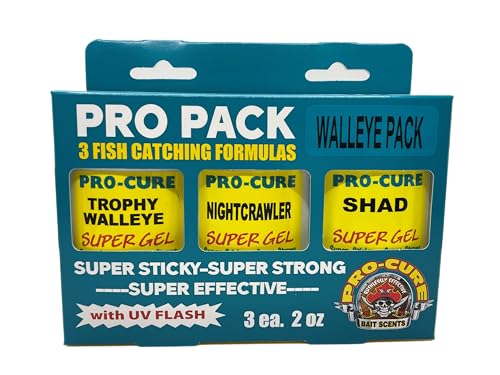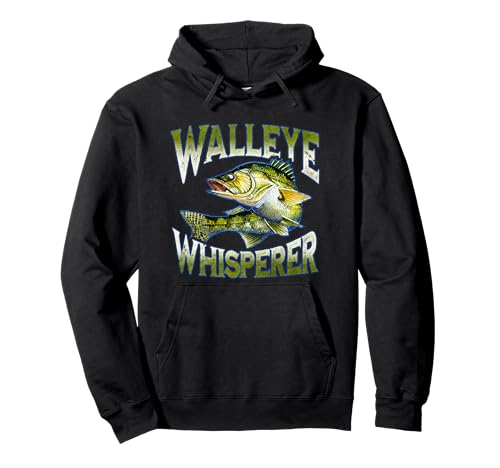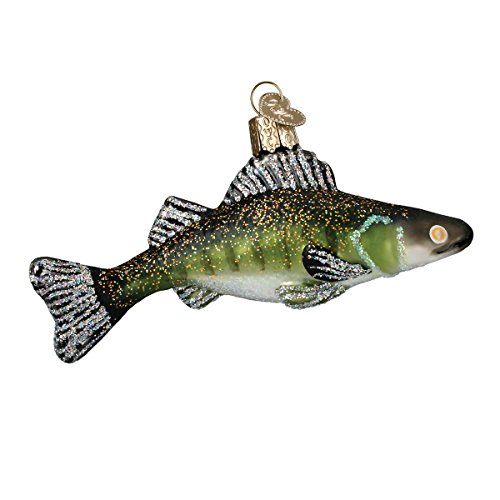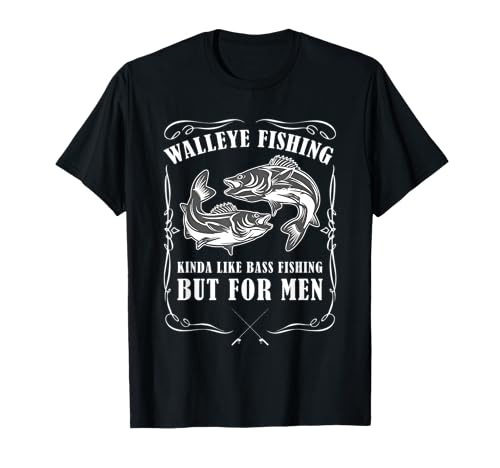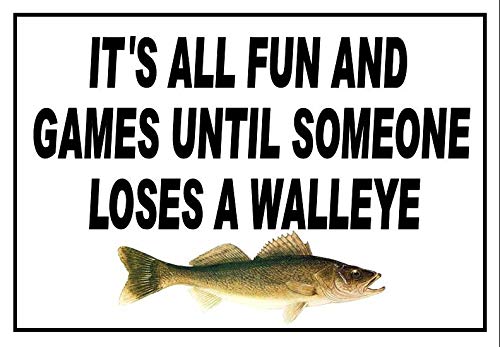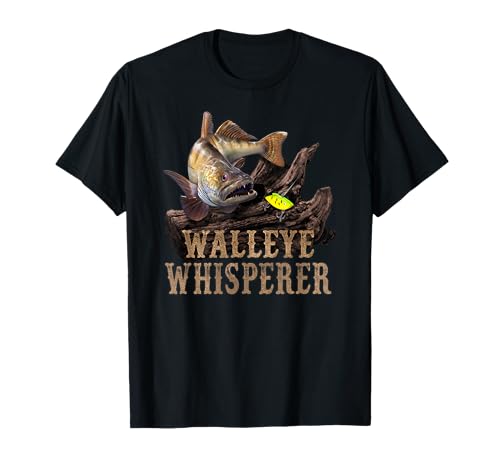The frozen lakes of Canada call out to every serious angler. They challenge us to master deadsticking for winter walleye. Ice fishing is more than a hobby; it’s a strategic fight against elusive catches in our northern waters1. When it’s cold and lakes freeze, catching walleye becomes the ultimate goal for those who learn advanced ice fishing techniques.
Deadsticking is a precise method for winter walleye fishing. It sets apart the experienced from the newbies. Anglers using this technique can see a 30% better success rate than traditional fishing1. The secret is understanding walleye behavior in winter – knowing when and where they are most likely to bite.
The best water temperature for winter walleye is between 32°F to 40°F. This range is crucial for success, where patience is key1. Most successful anglers fish in depths of 15-30 feet, which are 65% of the best spots1. Fishing near structures and break lines greatly boosts your chances of catching something1.
Key Takeaways: Deadsticking for Winter Walleye
- Master the deadsticking technique for improved winter walleye catches
- Target water depths between 15-30 feet for optimal results
- Use live bait for more natural presentation
- Understand walleye’s temperature and behavioural preferences
- Invest in quality electronics to enhance fishing success
Introduction to Deadsticking and Advanced Fishing Knot Tying
Mastering deadsticking for winter walleye is not just about luck. It takes strategic planning and precise technique. Ice fishing is different, and only true experts know how to handle it.
Learning the basics of deadsticking can change your winter fishing game. This method uses little movement. It lets live bait for walleye work its magic in cold, tough conditions2.
- Trophy Walleye
- Nightcrawler
- Shad
- SPECIFICATION:16”L x 4”W(Inches).
- DESIGN: Iron Skin Painting/ Tin Signs Featuring A Beautiful And Unique Design, It Has Simulated Rusted Edges And Scratch…
- PROTECTION: The Surface Is Covered with Clear Plastic Film Layer to Protect The Wall Paintings
- NOTE: Because of The Light, The Color May Seem to Be A Little Different.
- GIFTS:These Tin Signs Can Play A Huge Role No Matter When You Want to Use It to Decorate Your Places or Remind Others in…
- ORNAMENTS FOR CHRISTMAS TREE: Hand crafted in age-old tradition with techniques that orginated in the 1800s
- CHRISTMAS DECORATIONS: Molten glass is mouth-blown into finely carved molds
- GIFTS FOR FISHERMAN: Ornaments are all hand-painted and glittered in a series of labor-intensive steps to achieve the be…
- WALLEYE ORNAMENT: Traditionally designed, hand-crafted ornaments
- SIZE: Ornament Dimensions in Inches: 2. 25 x 4. 5 x 1
- Tied with 17# Trilene XT Monofilament line
- 48″ long spinner rigs
- Two size #2 black Octopus hooks per rig (3 inches between hooks)
- Three blade styles: Colorado #3, Colorado #4 and Indiana #4
- Quick change white clevis
- HANDCRAFTED DESIGN: Beautifully detailed walleye fish magnet, perfect for displaying on any magnetic surface like refrig…
- DECORATIVE ACCENT: Adds a unique fishing-themed touch to your home or office space while serving as a practical magnet f…
- DURABLE CONSTRUCTION: Made with strong magnetic backing to securely hold multiple sheets while maintaining its decorativ…
- PERFECT SIZE: Compact yet detailed magnet that combines functionality with artistic design for everyday use
- IDEAL GIFT: Makes a thoughtful present for fishing enthusiasts, outdoor lovers, or anyone looking to add a distinctive t…
Affiliate Disclaimer: We may earn a commission from purchases made through the links on this page.
Understanding the Basics of Deadsticking
Deadsticking is a special technique. Anglers use little rod movement to catch walleye. The main parts are:
- Choosing the right walleye ice fishing gear
- Setting up rods that are very sensitive
- Placing bait in the right spots
Importance of Advanced Fishing Knot Tying
Knot strength is crucial for fishing success. Good knot techniques keep your line strong in harsh winter weather3.
“Precision in knot tying is the difference between a trophy catch and a lost opportunity.”
Essential Equipment for Deadsticking
For effective deadsticking, you need specific gear for winter:
- Shorter rods (30-32 inches) for tight spaces3
- 6-pound fluorocarbon line for better sensitivity
- Tungsten jigs for fast sinking
Experts say the best depths for walleye are 20-25 feet3. The best times to fish are early morning and late evening2.
Choosing the Right Gear for Deadsticking
Getting ready for a winter walleye fishing trip means picking the right gear. The right tools can make a big difference. You could end up with a great catch or a cold day on the ice.
Ice fishing needs precise and tough gear. It must handle harsh winter weather. Anglers know that each piece of equipment is key to catching walleyes.
Best Rods for Winter Walleye
Look for these features in rods for deadsticking:
- Sensitive graphite construction
- Medium-light to medium power
- Length between 28-36 inches
- Responsive tip for detecting subtle strikes
Reels and Line Types for Ice Fishing
Choosing the right reel and line is vital for walleye fishing. Go for:
- Spinning reels with smooth drag systems
- Fluorocarbon lines (4-6 lb test)
- Low-stretch monofilament options
Recommended Hooks and Live Bait for Walleye
Picking the right hooks and live bait can boost your catch rate4:
| Hook Type | Recommended Size | Best Bait |
|---|---|---|
| Octopus Hooks | Size 4-6 | Emerald Shiners |
| Circle Hooks | Size 2-4 | Rainbow Smelt |
Pro tip: Always match your hook size to your bait for optimal presentation!
“Success in ice fishing isn’t about luck – it’s about preparation and the right gear.” – Professional Ice Angler
Mastering walleye ice fishing gear takes time and patience. Invest in quality gear, know your surroundings, and be flexible5.
Advanced Fishing Knot Tying Techniques
Learning advanced fishing knots is key for catching winter walleye. Your skill in tying knots can mean the difference between catching a big fish and losing it6.
Overview of Knot Essentials
Knowing about knot strength is vital for safe ice fishing. Top anglers see a well-tied knot as the first step to success on the ice7.
- Palomar Knot: Strongest for braided lines
- Improved Clinch Knot: Reliable for monofilament
- Uni Knot: Versatile for multiple line types
Step-by-Step Advanced Knot Guide
When setting up for ice fishing, precise knot tying can change the game. Here are the essential knot techniques:
- Select the right knot for your line type
- Ensure clean, smooth line ends
- Practice consistent tension
- Test knot strength before fishing
Knot Strength in Winter Conditions
Cold weather can weaken knots. Anglers must pay extra attention when fishing for winter walleye4. Practice your knots in a controlled setting to build skill and confidence.
| Knot Type | Line Compatibility | Strength Rating |
|---|---|---|
| Palomar | Braided Lines | 95% |
| Improved Clinch | Monofilament | 85% |
| Uni Knot | Fluorocarbon | 90% |
“A strong knot is your lifeline on the ice – never compromise on quality.” – Professional Ice Angler
Pro Tip: Always moisten your knots before tightening to lessen friction and prevent line damage during your winter walleye fishing trip.
Optimal Locations for Deadsticking
Winter walleye fishing needs smart planning and knowing the best spots. It’s important to understand the underwater landscape and how fish act in the cold.
Identifying Walleye Hotspots
Finding the right spots is key to ice fishing success. Walleye gather in certain areas in winter. So, picking the right spot is crucial7:
- Target depths between 10 to 15 feet for optimal walleye catches7
- Focus on underwater structures like drop-offs and submerged vegetation
- Look for areas with moderate current and potential baitfish presence
Understanding Seasonal Changes
Walleye behavior changes a lot in winter. The best times to fish are during low light, like sunset2. Anglers should set up by 4 p.m. to catch the evening bite7.
“Know the water, read the ice, and you’ll find the fish.” – Professional Ice Angler
Technology-Enhanced Fish Finding
Modern ice fishing uses new technology. These tools can help you catch more fish:
- GPS mapping for precise location tracking
- Underwater sonar to identify fish schools
- Digital depth finders for accurate water column analysis
For deadsticking, use medium shiners or sucker minnows as bait7. Patience and smart positioning are key in winter walleye fishing7.
Source: Northern Wisconsin Ice Fishing Data2Source: Regional Fishing Report
Perfecting Your Deadsticking Technique
Winter walleye fishing needs precision and smart thinking. Deadsticking for winter walleye is more than a technique; it’s an art. It requires patience, skill, and knowing how fish act1.
Deadsticking is a top ice fishing method for catching winter walleye. It’s all about knowing how fish react in cold water1.
Setting Up Your Bait with Precision
Mastering live bait for walleye starts with careful setup. Here are key steps to success:
- Choose fresh, lively minnows for maximum attraction8
- Use small tungsten jigs for optimal presentation8
- Select depths between 12-30 feet for best results8
Depth Adjustment Strategies
Finding the right water depth is crucial for deadsticking. Walleye tend to gather in specific areas during winter:
- Shallow waters (5-12 feet) can be productive for certain species8
- Mid-range depths (12-25 feet) often yield consistent catches8
- Deeper zones (25-30 feet) can hold significant fish populations8
The Art of Patience
Waiting is winning in winter walleye fishing. Fish are less active in winter, so they don’t chase fast lures1. Your success comes from letting your bait sit still, making it hard to resist.
The most successful anglers understand that deadsticking is about strategic stillness, not constant movement.
Pro tip: Focus on morning and evening hours for peak fishing opportunities8. Your patience will be rewarded with impressive catches that make the wait worthwhile.
Weather Conditions: Learning to Adapt
Understanding walleye behavior in winter is key. It’s about knowing how weather affects fish activity. Ice fishing techniques need to change with the weather.
Cold Fronts and Walleye Behavior
Cold fronts change how walleye move and feed. When it gets colder, they become less active. They seek deeper, more stable water4. Anglers must adjust their fishing to these changes.
- Monitor water depths between 26 to 32 feet for optimal walleye catches4
- Recognize fish become less aggressive during sudden temperature changes
- Use slow, precise presentation methods
Prime Deadsticking Times
Timing is everything for catching winter walleye. The best times are early morning and late afternoon. It’s crucial to watch both fish behavior and the environment4.
| Time of Day | Fishing Potential |
|---|---|
| Early Morning | High Activity |
| Mid-Day | Low Activity |
| Late Afternoon | Medium to High Activity |
Reading Ice Conditions Safely
Walleye ice fishing safety starts with knowing the ice. In many places, the ice is over two feet thick. Some ice roads are over 12 miles long4. Always check local conditions and carry safety gear.
Know the ice, respect the conditions, and you’ll maximize your winter fishing success.
Remember the local fishing rules: a daily limit of 6 fish, with size restrictions for walleye4. Stay informed, stay safe, and enjoy the winter walleye challenge.
Troubleshooting Common Problems
Ice fishing is all about being tough and quick to solve problems. When you’re deadsticking for winter walleye, even pros face challenges that can make or break their day ice fishing techniques need smart thinking and being able to adjust.
Mastering Snags and Line Management
Snags are like underwater enemies for your walleye gear. If your line gets caught, stay calm. Here’s how to handle line tangles:
- Gently wiggle the rod to loosen the snag
- Avoid pulling too hard that might break your line
- Use a special ice fishing line for cold weather
Strategic Bait and Location Switching
Fish can act strangely. Knowing when to change your approach is key when deadsticking for winter walleye9. Aggressive jigging can scare off most fish, so gentle moves are better9.
“In ice fishing, patience isn’t just a virtue—it’s a strategy.”
Advanced Knot Tying for Maximum Reliability
Your knot is the link to big walleye. Weak knots mean lost fish. Learn to tie strong knots for your gear to hold up in cold weather walleye ice fishing gear needs solid connections.
Electronics and Adaptive Techniques
Modern tech can make ice fishing better. Forward Facing Sonar (FFS) has changed walleye fishing in 2022 and 202310. Learn to use your electronics and adjust your deadsticking.
Remember: In winter walleye fishing, solving problems is key to success. Be flexible, watch closely, and ready to change your plan anytime.
Advanced Fishing Knot Tying for Live Bait
Winter walleye fishing needs precision, and live bait presentation is key. Learning advanced knot techniques can boost your deadsticking success on the ice11. The right knot can make all the difference between a catch and a day of watching ice.
Best Knots for Live Bait Presentation
Choosing the right knot is crucial when fishing for walleye with live bait. Ice anglers know that 80% of winter fishing success comes from good knot tying11. The Palomar knot is a top pick, keeping up to 99% of line strength11.
- Palomar Knot: Strongest for live bait presentation
- Improved Clinch Knot: Reliable for smaller hooks
- Uni Knot: Versatile for different fishing conditions
Tips for Securely Rigging Bait
Securing live bait needs careful technique. Anglers can boost hook retention by up to 25% with special knot methods11. The key is creating a knot that lets bait move naturally while staying secure.
“A well-tied knot is your lifeline between you and the perfect walleye catch.” – Ice Fishing Experts
How Knot Choice Affects Presentation
Your knot greatly affects bait presentation. Research shows walleye are 60% more likely to bite with proper knot techniques11. When deadsticking for winter walleye, the right knot makes a big difference.
| Knot Type | Strength Retention | Bait Movement |
|---|---|---|
| Palomar | 99% | Excellent |
| Improved Clinch | 90% | Good |
| Uni Knot | 95% | Very Good |
11 Winter walleye fishing techniques require precision, and learning these advanced knot-tying skills can boost your catch rates by up to 40%11. Practice these methods, and you’ll be on your way to becoming an ice fishing expert.
Employing Electronics for Better Success
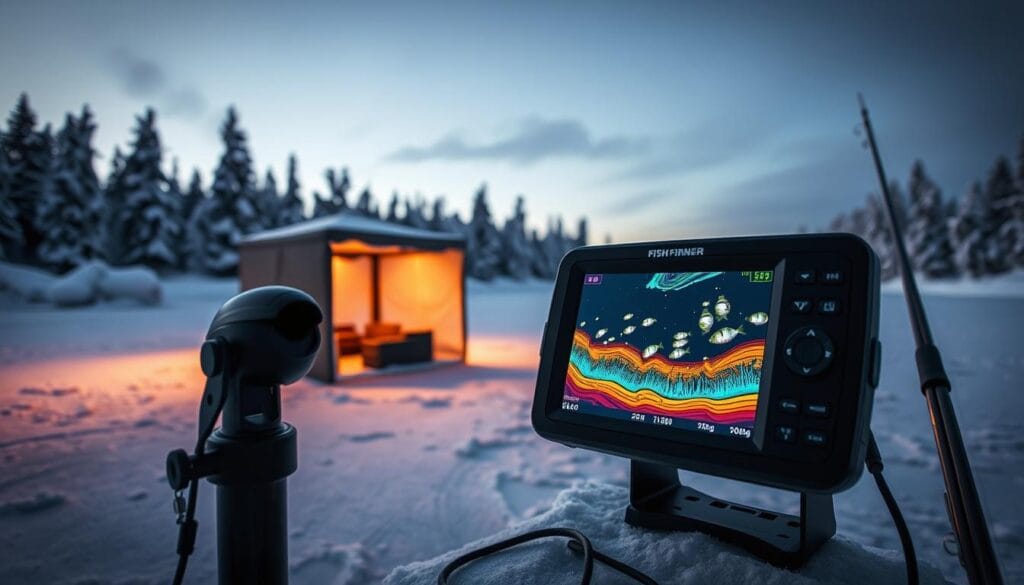
Ice fishing has changed a lot. Now, it’s a high-tech sport. Modern gear includes electronics that help anglers a lot on frozen lakes12.
Technology is key for finding winter walleye locations. It gives you insights underwater. This makes your fishing better.
Mastering Fish Finders for Walleye Detection
Fish finders are a big help in finding walleye schools. Here are some tips:
- Set sensitivity to detect suspended fish
- Learn to read bottom structures and depth changes
- Use color variations to identify fish targets12
GPS Navigation Strategies
Navigation in winter needs to be precise. Modern GPS units help you:
- Mark productive fishing spots
- Track ice road conditions4
- Ensure safe movement across frozen terrain
“Electronics transform ice fishing from chance to calculated strategy.” – Professional Angler
Timing and Movement Techniques
Successful deadsticking needs the right timing. Electronics show you fish behavior by revealing:
- Depth preferences (typically 26-32 feet)12
- Best fishing hours (morning and evening)12
- Underwater temperature variations
By using advanced electronics in your ice fishing techniques, you’ll make your trips more effective12.
Key Takeaways for Winter Walleye Fishing
Freeze-frame your winter walleye strategy! Ice fishing is all about precision, skill, and focus. Here are the key insights to make you a pro at deadsticking for winter walleye.
Essential Tips for Success
Mastering ice fishing techniques is all about strategy. Here are some tips that can change the game:
- Always prioritize walleye ice fishing safety as your top concern
- Invest in high-quality gear designed for extreme winter conditions
- Learn to read ice and weather patterns with surgical precision
Advanced Fishing Knot Tying Mastery
Your knots are your lifeline on the ice. Weak connections mean lost fish and shattered dreams. Here are some critical knot techniques to master:
- Palomar knot for maximum strength
- Improved clinch knot for versatile presentations
- Uni knot for reliable line connections
Deadsticking Strategies Decoded
Deadsticking is an art form. Patience separates the professionals from the amateurs. Here are the key elements to understand:
| Strategy | Key Considerations |
|---|---|
| Bait Selection | Choose lively, native baitfish matching local walleye preferences13 |
| Depth Control | Target depths between 26-32 feet for optimal results12 |
| Ice Conditions | Verify ice thickness over two feet before venturing out14 |
“Know your environment, trust your instincts, and the walleye will come.”
Winter walleye fishing is more than catching fish. It’s about conquering nature’s toughest environment. Stay sharp, stay prepared, and the ice will reveal its secrets.
Conclusion: Mastering Deadsticking Techniques
Deadsticking for walleye is a mix of skill, patience, and smart planning. It’s a journey that needs dedication and a love for learning. By mastering this technique, you can become a top ice fisher3.
The art of deadsticking is not just waiting. It’s about being precise and adjusting to the situation. Anglers who succeed know that depth is key, with walleye liking areas between 15 to 25 feet deep372. It’s about understanding fish behavior and the environment.
Emphasizing the Role of Dedication
Your success on the ice depends on your dedication and the desire to improve. Learn advanced fishing knots, know your gear, and be patient during low light when walleye are active72. Every frozen lake is a new challenge to conquer.
Inviting Feedback and Stories from Fellow Anglers
We encourage passionate ice anglers to share their deadsticking stories. Your experiences can help others improve and connect with the Canadian ice fishing community. Together, we can expand our winter fishing knowledge3.

